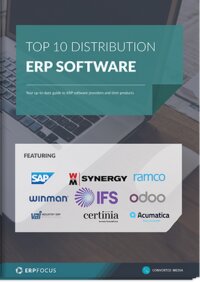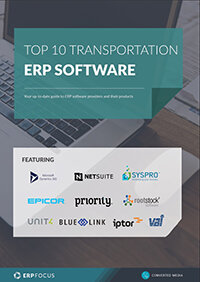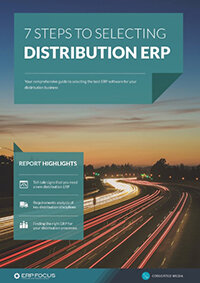4 Tips for Implementing Distribution ERP
Distributors must plan a distribution ERP implementation to completely avoid any down time. Service businesses can continue work away from their ERP for a while. Manufacturers can build up inventory to buffer against down time. But distributors have customers who will be out of business without their products.
Improve Outdated Processes
Still, ERP implementation can be a good time to update some of your processes. Not at go-live, but before you change your ERP. Always look for ways to improve your efficiency and your ability to deliver to your customers. Perhaps there is an improvement you put off because your old ERP did not support your needs. Make the change today and work around the old ERP and you will hit the ground running when implementation is complete.
Abolish Workarounds
Don’t try to make your new distribution ERP look like your old one. Distribution is a business where change is frequent as you support new customers and their evolving promotions. You might have developed workarounds over time because the old ERP did not support the processes or because you just did not have time to figure out how to do what was needed within the ERP. Take the time now to use the capabilities of the ERP, the capabilities you have paid for.
Keep Customers and Suppliers in Mind
Plan the distribution ERP implementation around your customers and your suppliers. What deliveries will be needed around the time of your planned implementation? What incoming loads do you expect? Bring in work ahead of the implementation time if the product is not perishable. Arrange to deliver early to some customers if possible. You have been a good business partner and most will understand and comply with short-term difficulties.
Prepare for Downtime
Your ERP might be down for a short time, but your service cannot be down. You might not be able to have product in the truck ahead of schedule, but you should be able to have the bill of loading and packing lists prepared ahead. Your suppliers can probably send data on their incoming products ahead of the delivery. Go ahead and process the paperwork early. You need the ERP for that and later you can put the products away because you have already planned where it will be kept.
Plan everything to the finest degree possible. Get the implementation done as quickly and efficiently as possible. Your customers might not even know the extra work you had to do but they will know they had product to meet their needs. Next, comes another important phase of ERP – planning for the future. What can you do to continue to improve and how will the new ERP help?
Free white paper

ERP Implementation: 9 steps to success
The 9 proven steps you should follow when implementing ERP

Featured white papers
-

Top 10 Distribution Software Comparison
Compare the best distribution ERP systems available today
Download -

Top 10 Transportation ERP Software Comparison
Get your free comparison of the top 10 transportation ERPs
Download -

7 steps to selecting distribution ERP
Get expert advice on distribution ERP selection and requirements analysis
Download
Related articles
-

ERP for Food Distributors: Key Functionality
In a modern world where products are tailored to consumers, why should ERP for food distributors ...
-

CMMC Compliance: What Aerospace and Defense Manufacturers Need to Know
Key insights on CMMC compliance, deadlines, and securing DoD contracts with CMMC 2.0 certificatio...
-

QuickBooks vs ERP: What ERP does better
Could your accounting & inventory management benefit from upgrading to ERP?

